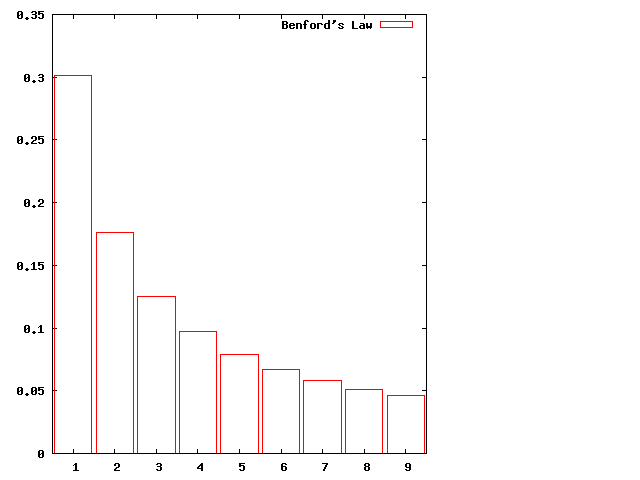Benford’s Law is a surprising result that says data from many sources have the leading digit distributed in a non-uniform way. For example, the first digit is 1 30% of the time but 9 less than 5% of the time. To be precise, Benford’s law says that the probability of the first digit being d is given by
P(d) = log10(1 + 1/d)
The graph of the distribution makes clear how striking the result is:

Forensic accountants have long used Benford’s law to spot fraudulent data—typically made up numbers fail to follow the distribution predicted by Benford’s law (although, interestingly, Bernie Madoff made sure that his returns obeyed the law).
A paper in the German Economic Review entitled Fact and Fiction in EU-Governmental Economic Data by Bernard Rauch, Max Göttsche, Gernot Brähler, and Stefan Engel looks at data submitted to the European Union by countries wishing to join the EU through the lens of Benford’s law. Their analysis shows that the data supplied by the Greek government was particularly suspicious raising the tantalizing possibility that the current economic problems the EU is having with Greece could have been avoided by simply counting the leading digits of the data.
There are writeups about the paper by Tim Harford and Hans Christian Müller if you want some more information. Benford’s law is a fascinating piece of arcana and it’s always enjoyable to see it in action.
